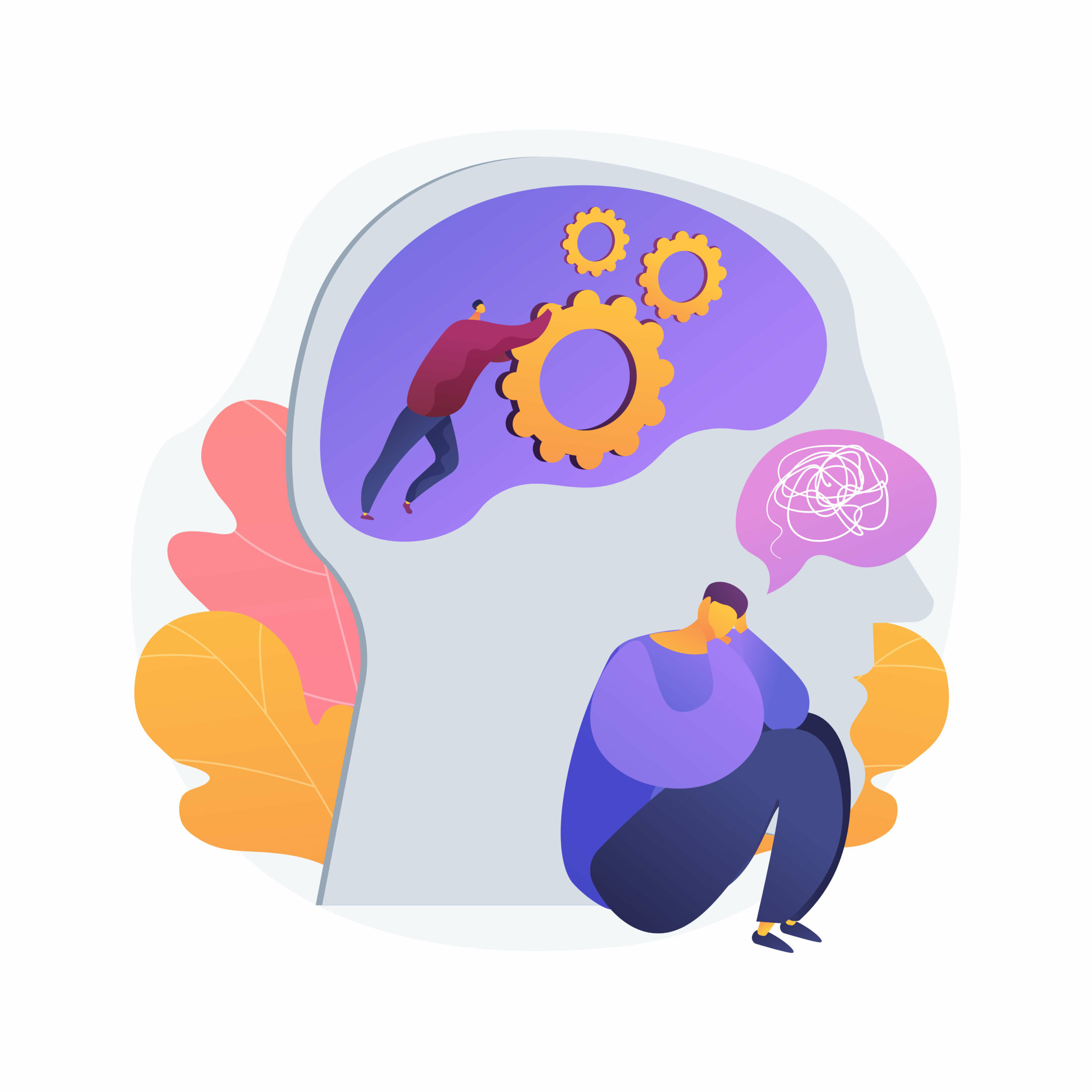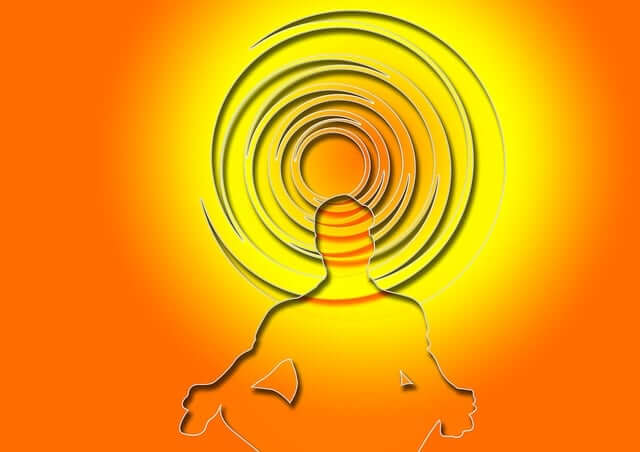Consciousness involves awareness and deliberate thought, while the unconscious operates below awareness, influencing behavior without conscious control.
Have you ever wondered about the difference between the conscious and unconscious mind? These two aspects of our mental processes play a significant role in shaping our thoughts, behaviors, and decision-making. Understanding their distinctions can provide valuable insights into how our minds work and how we interact with the world around us.
The conscious mind is where thoughts, logic, and reasoning are processed. It is the part of our brain that we are aware of and that allows us to actively engage in problem-solving, critical thinking, and decision-making. On the other hand, the subconscious mind operates below the surface of consciousness. It contains our memories, habits, beliefs, and automatic thought processes, often influencing our behavior without us even realizing it.
Exploring the conscious and unconscious mind can shed light on our awareness, behavior, and how we make choices. Let’s dive deeper into these fascinating aspects of our mental landscape and uncover the key distinctions between them.
Key Takeaways:
- The conscious mind is responsible for thoughts, logic, and reasoning, while the subconscious mind operates below the surface of consciousness.
- The conscious mind is aware of its thoughts and actions, while the unconscious mind operates beneath our awareness.
- Consciousness plays a crucial role in decision-making, influencing our choices based on our values and beliefs.
- The subconscious mind stores memories, habits, and automatic thought processes that influence our behavior without us realizing it.
- Understanding the distinctions between the conscious and unconscious mind provides valuable insights into our thoughts, behaviors, and decision-making processes.
Understanding the Conscious Mind

In our daily lives, we rely on the conscious mind to navigate through various tasks and make choices. It is the realm of conscious awareness, where our thoughts, actions, and behaviors come into play. Understanding the workings of the conscious mind provides valuable insights into how we perceive the world and interact with it.
The conscious mind is responsible for our awareness, thoughts, and actions. It allows us to focus on a single task at a time, enabling problem-solving and critical thinking. When we consciously choose to direct our attention to a specific matter, we engage our conscious mind to analyze and respond.
One crucial aspect of the conscious mind is its influence on our behavior. Our conscious awareness shapes how we interact with others and respond to different situations. For example, when we engage in a conversation, our conscious mind helps us process the information, formulate coherent responses, and actively listen to the other person’s words.
While the conscious mind offers us the ability to rationalize and think critically, it is limited in its capacity to process large amounts of information simultaneously. It allows us to concentrate on one task or thought at a time, making it easier to analyze complex situations and make decisions based on logical reasoning.
Understanding conscious and unconscious behavior is an essential aspect of delving deeper into the complexities of the human mind. Our conscious experiences shape our reality and guide our actions, but it is also vital to acknowledge the underlying influence of our unconscious mind, which we will explore in the following section.
Contrasting Conscious and Unconscious Behavior
| Conscious Behavior | Unconscious Behavior |
|---|---|
| Deliberate and intentional | Automatic and instinctive |
| Requires focused attention | Operates without conscious awareness |
| Influenced by logical reasoning | Driven by emotions and past experiences |
| Allows for adaptability and flexibility | Creates patterns and habits |
Exploring the Subconscious Mind
When it comes to understanding the complexities of our mind, it is crucial to delve into the realm of the subconscious. This hidden part of our psyche operates below the level of consciousness, harboring a treasure trove of memories, habits, beliefs, and automatic thought processes. While we may not be aware of its workings, the subconscious mind plays a significant role in shaping our behavior and instincts.
The subconscious mind is like an invisible force that silently guides us, often without our conscious awareness. It influences our actions, reactions, and decision-making processes. Imagine it as the backstage manager, pulling the strings and setting the stage, while our conscious mind takes center stage.
The Power of the Subconscious Mind
The subconscious mind is responsible for processing and storing vast amounts of information. It acts as a mental storehouse, preserving memories, shaping our beliefs, and forming habitual patterns of behavior. This occurs effortlessly and automatically, without any conscious effort on our part.
To grasp the power of the subconscious mind, consider the simple act of driving a car. Initially, when we learn to drive, we consciously think about every step and action. However, with time, driving becomes a routine activity that doesn’t require much conscious effort. This is because the subconscious mind takes over, executing the necessary actions while our conscious mind attends to other thoughts or daydreams.
Conscious and Unconscious Processing
The conscious and subconscious mind work in tandem, but their processing mechanisms differ. The conscious mind processes information deliberately and deliberately, relying on logic, reasoning, and critical thinking. It is the part of our mind that we are actively aware of in the present moment. This is where we deliberate, focus, reflect, and make consciously calculated decisions.
On the other hand, the subconscious mind operates automatically and intuitively. It processes information instantaneously, based on stored memories, patterns, and past experiences. While the conscious mind is aware and deliberate, the subconscious mind functions beneath the surface, often unknown and unacknowledged.
Unearthing the Subconscious
Accessing and understanding the subconscious mind can be a transformative journey. It allows us to unveil hidden beliefs, explore deep-seated emotions, and uncover the root causes of our behaviors. By becoming more aware of our subconscious processes, we can begin to see patterns and make conscious choices that align with our true desires.
Various practices, such as meditation and hypnosis, can help facilitate this exploration. These techniques can quiet the conscious mind, allowing the subconscious to come to the forefront. As we embrace this exploration, we gain a deeper understanding of ourselves and the intricate workings of our mind.
Throughout this article, we have explored the distinctions between conscious and unconscious processing, and the significance of the subconscious mind in shaping our behaviors and instincts. With a greater awareness of these inner mechanisms, we can begin to harness the power of our subconscious and create positive change in our lives.
The Difference Between Conscious and Unconscious
When it comes to understanding our minds, it is important to recognize the difference between conscious and unconscious thinking. While the conscious mind is aware of its thoughts and actions, the unconscious mind operates beneath our awareness, influencing our behavior based on past experiences and learned behaviors.
The conscious mind is responsible for logical thinking and decision-making. It allows us to analyze information, weigh options, and make choices based on our values and beliefs. In contrast, the unconscious mind works in the background, influencing our actions and behaviors without our conscious awareness.
Let’s take a closer look at the distinctions between conscious and unconscious thinking:
Conscious Thinking
The conscious mind is the realm of our awareness. It is where thoughts, ideas, and rational thinking take place. When we consciously think, we are actively engaging in logical reasoning and problem-solving. This type of thinking requires focused attention and allows us to make deliberate decisions based on available information.
Some key characteristics of conscious thinking include:
- Active awareness of thoughts and actions
- Ability to shape our behavior through conscious intention
- Capacity for logical reasoning and decision-making
Unconscious Thinking

The unconscious mind, on the other hand, operates beneath our conscious awareness. It is the realm of automatic thoughts, habits, and learned behaviors that have become ingrained over time. Unconscious thinking shapes our behavior based on past experiences, without requiring active attention or awareness.
Here are some key features of unconscious thinking:
- Exerts influence without conscious intention
- Guided by learned behaviors and past experiences
- May drive repetitive patterns and automatic responses
The interaction between conscious and unconscious thinking is an integral part of our cognitive processes. While conscious thinking allows us to analyze and make decisions, unconscious thinking can provide valuable insights and influence our behavior in subtle ways.
| Conscious Thinking | Unconscious Thinking |
|---|---|
| Occurs at the surface level of awareness | Operates beneath our conscious awareness |
| Relies on logic and reasoning | Influenced by past experiences and learned behaviors |
| Requires active attention and focus | Functions automatically and without conscious effort |
The relationship between conscious and unconscious thinking is complex and interconnected. While the conscious mind plays a significant role in decision-making, the unconscious mind shapes our behavior based on deeply ingrained patterns and learned responses. Recognizing and understanding these dynamics can lead to a deeper understanding of ourselves and our motivations.
The Levels of Mind Models
Understanding the intricacies of the mind is a fascinating journey into the depths of our consciousness. In this section, we will explore the three main levels of mind models: conscious, subconscious, and unconscious. Each level plays a significant role in shaping our thoughts, actions, and overall awareness.
The Conscious Mind
The conscious mind is the level of awareness where we actively process thoughts, engage in logical reasoning, and make conscious choices. It is the part of our mind that is responsible for our immediate awareness and focuses on the present moment. When we think, analyze, or problem-solve, it is our conscious mind that is at work.
The Subconscious Mind
Below the conscious level lies the subconscious mind, which operates on an automatic and hidden level. The subconscious mind stores our beliefs, memories, habits, and automatic thought processes. It influences our behavior and actions without us usually being consciously aware of it. When we retrieve information we didn’t actively remember or find ourselves reacting to certain triggers, it is our subconscious mind guiding us.
The Unconscious Mind
Deeper still is the unconscious mind, a realm that holds the deep recesses of our past, hidden memories, and unresolved experiences. It is the repository of repressed thoughts, emotions, and desires. The unconscious mind is believed to have a profound impact on our behaviors, motivations, and dreams, often revealing itself through slips of the tongue, dreams, or psychological phenomena. Accessing the unconscious mind can provide valuable insights into our past and aid in self-discovery.
Understanding these three levels of mind models provides a framework for comprehending the complexity of human consciousness and how it shapes our thoughts, emotions, and behavior. Let’s explore a detailed comparison of the characteristics and functions of these mind models in the table below:
| Mind Model | Characteristics | Functions |
|---|---|---|
| Conscious | Immediate awareness, logical thinking, problem-solving | Active processing of thoughts, decisions, and analysis |
| Subconscious | Automatic, hidden, contains memories, habits, and beliefs | Influences behavior, automatic thought processes, reactions |
| Unconscious | Repressed thoughts, deep memories, unresolved experiences | Impacts behavior, motivations, dreams, self-discovery |
Understanding the various levels of mind models is vital for unlocking the potential of our consciousness and unraveling the mysteries of our thoughts, actions, and motivations.
The Unconscious Mind
The unconscious mind is a complex and mysterious aspect of our mental processes. It operates automatically and below the level of our conscious awareness, making it difficult to measure or fully comprehend. This section will explore the workings of the unconscious mind and its impact on our behavior and emotions.
The Role of the Unconscious Mind
The unconscious mind stores repressed thoughts, feelings, and memories that we are not consciously aware of. These hidden elements can often influence our behavior and reactions in unexpected ways, shaping our experiences and interactions with the world around us.
Unconscious Behavior Examples
Unconscious behavior examples are prevalent in everyday life. Let’s take a look at a few:
- Automatic habits: Have you ever found yourself driving home from work on autopilot, not remembering the details of the journey? This is an example of an unconscious habit taking over.
- Emotional triggers: Certain situations or stimuli can evoke strong emotional responses without us consciously realizing why. It could be a word, a smell, or a particular song that stirs up emotions from the past.
- Defense mechanisms: When faced with stressful or challenging situations, our unconscious mind may activate defense mechanisms like denial, repression, or projection to protect us from emotional pain.
These are just a few examples of how the unconscious mind influences our thoughts, feelings, and actions without our conscious awareness.
Exploring the Unconscious Mind with Psychoanalysis
Psychoanalysis is a therapeutic approach developed by Sigmund Freud that aims to delve into the depths of the unconscious mind. Through techniques such as free association, dream analysis, and interpretation, psychoanalysis helps individuals access and explore repressed thoughts and emotions.
The image above visually represents the intricate workings of the unconscious mind, with various events and thoughts occurring beneath the surface of our conscious awareness.
By understanding the unconscious mind and bringing repressed thoughts and feelings to light, individuals can gain insight into their behavior, improve emotional well-being, and work towards personal growth and self-discovery.
The Subconscious Mind
The subconscious mind plays a crucial role in shaping our behavior, emotions, and overall thought processes. While the conscious mind is responsible for our immediate awareness and logical thinking, the subconscious mind operates beneath our conscious awareness, influencing our actions and decisions in ways we may not always be aware of.
One key aspect of the subconscious mind is its function as a filter and storage system for information. It constantly receives input from our surroundings and stores it for later retrieval. This information can include memories, beliefs, habits, and automatic thought processes.
Automatic Skills and Behavior
The subconscious mind controls many automatic skills that we perform without consciously thinking about them, such as breathing, blinking, and walking. These behaviors are deeply ingrained and require little conscious effort to execute.
Additionally, the subconscious mind can dramatically influence our behavior and emotions. For example, if we have developed a fear or phobia due to a past traumatic experience, the subconscious mind may trigger feelings of anxiety or panic when encountering similar situations, even if we’re consciously unaware of the underlying cause.
Here are some subconscious behavior examples:
- Reacting impulsively to certain stimuli
- Experiencing unexplained emotions or mood swings
- Engaging in repetitive or habitual behaviors
- Developing strong preferences without conscious reasoning
- Feeling intuitive nudges or gut instincts
Understanding the subconscious mind and its impact on our behavior can lead to greater self-awareness and personal growth. By recognizing patterns and triggers that arise from the subconscious, we can begin to make conscious choices and shape our behaviors in a way that aligns with our goals and values.
So how do we tap into the power of the subconscious mind? One method is through hypnosis, which allows the conscious mind to temporarily step back, giving the subconscious mind more prominence. This can facilitate access to deeply embedded beliefs and emotions, creating an opportunity for positive transformation.
The Role of Consciousness in Decision Making
Consciousness plays a fundamental role in the decision-making process. It encompasses our awareness, thoughts, and ability to consider various options before making a choice. When faced with a decision, our conscious mind allows us to weigh the potential consequences and align our actions with our values and beliefs.
Through conscious decision making, we can evaluate the available alternatives, analyze the potential outcomes, and make choices that align with our goals and aspirations. This level of awareness enables us to exercise critical thinking, problem-solving, and logical reasoning, resulting in more informed and deliberate decisions.
However, it is important to recognize that decision making is not solely driven by conscious thought processes. Our unconscious mind, influenced by past experiences, biases, and learned behaviors, also plays a significant role in shaping our choices.
Unconscious factors can introduce biases, preferences, and automatic thought processes that impact our decision-making process without us even realizing it. These hidden influences can be both beneficial and limiting, depending on the circumstances. They can help us make efficient decisions based on intuition and instinct, but they can also lead to cognitive biases that distort our judgment.
Understanding the interplay between conscious and unconscious decision making is essential for making well-informed choices. By raising awareness of our unconscious biases and thought patterns, we can actively mitigate their influence and ensure that our conscious decision-making processes are not unduly swayed by hidden factors.
Recognizing the role of consciousness in decision making empowers us to make choices that align with our true values, promote growth, and foster positive outcomes. It allows us to transcend automatic responses and engage in thoughtful deliberation, resulting in decisions that are authentic, purpose-driven, and consistent with our personal and professional goals.
The Interaction Between Consciousness and Unconsciousness in Decision Making
When it comes to decision making, your conscious and unconscious mind work together in a complex interplay. While your conscious mind is responsible for rational thought and logical analysis, your unconscious mind draws upon past experiences, emotions, and instincts to influence your decision-making process.
According to researchers, unconscious factors can play a significant role in decision making, sometimes even overshadowing conscious thought processes. These hidden influences can manifest in the form of biases, heuristics, and intuitive judgments.
For instance, studies have shown that people often rely on unconscious cues, such as emotions and gut instincts, when making choices. These unconscious signals can provide valuable insights that our conscious mind might overlook or underestimate.
Furthermore, the unconscious mind is adept at processing vast amounts of information simultaneously, allowing it to consider multiple factors and generate intuitive responses. This ability can be particularly useful in situations where time is limited, and rapid decision making is required.
Understanding the interaction between consciousness and unconsciousness in decision making presents an opportunity to harness the strengths of both arenas. By integrating conscious analysis with unconscious insights, we can navigate complex decisions more effectively and enhance the quality of our choices.
Overall, conscious decision making provides a deliberate and thoughtful approach, while the unconscious contributes rich insights that can augment our decision-making process. Striking a balance between the two allows us to make well-rounded, informed decisions that align with our values and aspirations.
Repressed Emotions and the Subconscious Mind
Repressed emotions have a profound impact on our well-being, often manifesting as physical pain, anxiety, and destructive behaviors. These suppressed feelings are stored in the depths of our subconscious mind, creating a complex web of buried memories and unresolved traumas.
Understanding and acknowledging these repressed emotions is a critical step toward healing and personal growth. By recognizing and exploring these hidden feelings, we can gain valuable insights into their origins and the ways in which they influence our present behavior and thought patterns.
Uncovering buried memories requires a compassionate and supportive approach. Many individuals find it helpful to work with a mental health professional trained in techniques such as psychoanalysis or cognitive therapy. These professionals can guide individuals through the process of accessing repressed emotions, providing a safe space for exploration and healing.
Unearthing Buried Memories
Unresolved emotions and traumatic experiences often become buried in the subconscious mind as a defense mechanism. The subconscious mind acts as a protective barrier, shielding us from painful memories until we are ready to process and heal from them.
Through various therapeutic modalities, individuals can begin to uncover these buried memories and explore their impact on their current lives. The process of unearthing repressed emotions may involve techniques such as talk therapy, hypnosis, or somatic experiencing.
As these memories come to the surface, individuals have an opportunity to process and release the associated emotions. This healing journey can lead to a deeper understanding of oneself, improved emotional well-being, and the ability to make positive changes in one’s life.
Examining Impact on Current Behavior
Repressed emotions stored in the subconscious mind have a profound impact on our thoughts, behaviors, and relationships. These buried memories can influence our decision-making, reactions, and patterns of relating to others.
By examining the role of repressed emotions in our current behavior, we can gain insights into how past experiences continue to shape our lives. This self-reflection allows us to identify patterns and triggers, empowering us to make conscious choices that align with our values and desires.
Working with a mental health professional can provide guidance and support in this process. Through therapy, individuals can learn techniques for recognizing and managing the effects of repressed emotions, fostering emotional healing and personal growth.
Continue reading to explore the importance of changing habits and rewiring the brain for success.
Changing Habits and Rewiring the Brain
Our habits and behaviors are deeply ingrained in our subconscious mind. They are the autopilot that guides our daily actions and decisions. But what if we could change these habits and rewire our brains for success? By understanding the link between conscious and subconscious thought patterns, we can embark on a transformative journey.
Reprogramming the brain requires patience and consistent practice. It is a gradual process of rewiring the neural connections that dictate our automatic responses. By consciously challenging and replacing limiting beliefs, we can create new pathways in our minds that support our goals and aspirations.
To successfully change habits, it is vital to understand the cues, routines, and rewards associated with them. By identifying the triggers that prompt the unwanted behavior, we can consciously replace them with healthier alternatives. This approach, known as habit loop modification, allows us to harness the power of the mind to foster positive change.
Breaking the Habit Loop
Breaking a habit requires a strategic approach. Referencing the habit loop model developed by Charles Duhigg, we can understand the essential components involved:
| Cue | Routine | Reward |
|---|---|---|
| The trigger that initiates a habit | The behavior itself | The gratification or satisfaction derived from the behavior |
By identifying the cue and reward associated with the habit, we can intentionally modify the routine. For example, if stress triggers the habit of overeating unhealthy snacks, we can replace the routine of eating with a healthier coping mechanism, such as going for a walk or practicing deep breathing exercises.
Consistency is key in rewiring the brain. By repeatedly engaging in the new behavior, we strengthen the neural pathways associated with it. Over time, the modified routine becomes the new default, leading to lasting change.
The process of changing habits and reprogramming the brain is a fascinating journey of self-discovery and personal growth. It requires self-awareness, commitment, and a willingness to embrace discomfort. As we continue to challenge and transform our thoughts and behaviors, our subconscious mind adapts, paving the way for success.
Accessing the Subconscious Mind with Hypnosis
Hypnosis is a powerful tool that allows us to tap into the potential of our subconscious mind. By inducing a deeply relaxed state, hypnosis creates a bridge between the conscious and subconscious realms, enabling access to the hidden depths of our thoughts and beliefs.
During hypnosis, the conscious mind becomes less active, allowing the subconscious mind to take the spotlight. This altered state of consciousness makes the subconscious mind more open to suggestions and new ideas. It can be likened to a door that swings open, revealing the vast reservoir of untapped potential within us.
Through hypnosis, individuals can address deeply rooted issues, reshape limiting beliefs, and unlock their innate creativity. Hypnotherapy can facilitate powerful shifts in behavior and mindset, leading to profound and lasting changes.
The Benefits of Hypnosis for Accessing the Subconscious Mind
Accessing the subconscious mind through hypnosis offers a range of benefits, including:
- Releasing Trauma: Hypnosis can help individuals work through and heal past traumas by accessing buried memories and emotions in a safe and controlled environment.
- Changing Habits: By accessing the subconscious mind, hypnosis can assist in breaking negative patterns and replacing them with healthier habits and behaviors.
- Overcoming Fears and Phobias: Hypnotherapy can help individuals confront and overcome deep-rooted fears and phobias by addressing their subconscious origins.
- Improving Performance: Hypnosis can enhance performance in various areas, such as sports, public speaking, and artistic endeavors, by aligning the conscious and subconscious minds towards achieving desired outcomes.
- Promoting Emotional Healing: By accessing the subconscious mind, hypnosis can facilitate emotional healing by resolving internal conflicts, uncovering repressed emotions, and fostering self-acceptance.
By unlocking the power of the subconscious mind through hypnosis, individuals can tap into their inner resources and create positive, transformative change.
| Subconscious Mind | Hypnosis |
|---|---|
| Operates below the level of consciousness | Facilitates access to the subconscious mind |
| Holds memories, habits, and automatic thought processes | Allows for the exploration and transformation of these subconscious elements |
| Influences behavior and instincts | Enables the reprogramming of behavior and beliefs |
Conclusion
Understanding the distinctions between the conscious and unconscious mind is crucial in gaining insight into our thoughts, behaviors, and decision-making processes. The conscious mind is where thoughts, logic, and reasoning take place, while the subconscious mind operates beneath the surface, containing our memories, habits, beliefs, and automatic thought processes.
Both the conscious and unconscious mind play significant roles in shaping our experiences and interactions with the world around us. The conscious mind allows us to be aware, think critically, and solve problems, influencing our behavior and how we engage with others. On the other hand, the subconscious mind controls our instinctual and learned behaviors, often without our conscious awareness.
Recognizing the influence of the subconscious mind and understanding its relationship with the conscious mind can help us take control of our thoughts, behaviors, and decision-making. By changing our conscious thought patterns and actively reprogramming our subconscious, we can begin to change our habits and reshape our lives for the better.
In conclusion, the conscious and unconscious mind work together to shape our thoughts, actions, and experiences. By delving deeper into our minds and understanding the interplay between the conscious and subconscious, we can gain a better understanding of ourselves and unlock our full potential.
FAQ
What is the difference between the conscious and unconscious mind?
The conscious mind is aware of its thoughts and actions, while the unconscious mind operates beneath our awareness. The conscious mind is used for logical thinking and decision-making, while the unconscious mind influences our behavior based on past experiences and learned behaviors.
What is the role of the conscious mind?
The conscious mind is responsible for our awareness, thoughts, and actions. It is able to focus on one task at a time and is used for problem-solving and critical thinking. It influences our behavior and dictates how we interact with the world around us.
What does the subconscious mind do?
The subconscious mind operates below the level of consciousness and contains all of our memories, habits, beliefs, and automatic thought processes. It controls our behavior and instincts, often without us being aware of it.
How do the conscious and unconscious mind differ in terms of thinking?
The conscious mind is used for logical thinking and decision-making, while the unconscious mind influences our behavior based on past experiences and learned behaviors. The conscious mind is aware of its thoughts and actions, while the unconscious mind operates beneath our awareness.
What are the three main levels of mind models?
The three main levels of mind models are conscious, subconscious, and unconscious. Consciousness defines our thoughts, actions, and awareness, while the subconscious contains reactions and actions that we realize when we think of them. The unconscious is the deep recesses of our past and memories.
What happens in the unconscious mind?
The unconscious mind is a deeper mental process that happens automatically and is difficult to measure. It stores repressed thoughts and feelings, which can manifest in everyday situations and unexpected triggers. Psychoanalysis can help access the unconscious mind and explore repressed thoughts and feelings.
What is the role of the subconscious mind?
The subconscious mind is the part of our mind that is not currently in focal awareness. It acts as a filter, storing information for later retrieval. It controls automatic skills, such as breathing, and can influence our behavior and emotions.
How does consciousness impact decision making?
Consciousness plays a crucial role in decision-making, as it allows us to consider our options, weigh consequences, and make choices based on our values and beliefs. Unconscious factors, such as biases and past experiences, can also influence our decision-making process.
How do repressed emotions affect the subconscious mind?
Repressed emotions can manifest as physical pain, anxiety, and destructive behaviors. Recognizing and understanding these repressed feelings can help unearth buried memories and examine their impact on current behavior. Working with a mental health professional can assist in this process.
Can habits and behaviors be changed by reprogramming the mind?
By understanding the link between conscious and subconscious thought patterns, we can begin to change our habits and behaviors. Reprogramming how we think requires patience and consistent practice. By doing so, our subconscious mind will begin to adopt these new thoughts as the preferred pathway for future decisions and actions.
How can hypnosis help access the subconscious mind?
Hypnosis can be a powerful tool for accessing the potential of the subconscious mind. During hypnosis, the conscious mind becomes less active, allowing the subconscious mind to become more open to suggestions and new ideas. This can lead to lasting changes in behavior and beliefs.
What is the significance of understanding conscious and unconscious mind distinctions?
Understanding the distinctions between the conscious and unconscious mind is essential for gaining insight into our thoughts, behaviors, and decision-making processes. Both the conscious and unconscious mind play significant roles in shaping our experiences and interactions with the world around us.
Source Links
- https://diversity.social/unconscious-vs-subconscious/
- https://www.ncbi.nlm.nih.gov/pmc/articles/PMC3767904/
- https://www.linkedin.com/pulse/deep-dive-key-differentiations-conscious-subconscious-mind
Image Credits
Featured Image By – Freepik
Image 1 By – vectorjuice on Freepik
Image 2 By – Gerd Altmann from Pixabay









